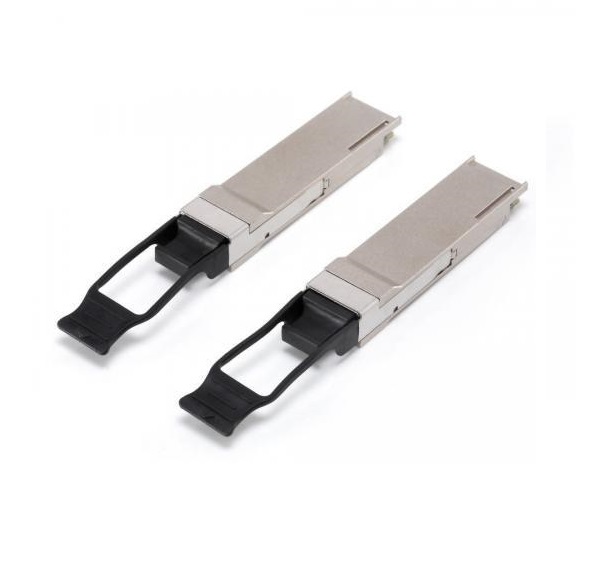- Sales SupportContact Sales
- Call us at: +(86) 15211074652
- Send us a email at: info@zr-fibercable.com
QSFP28 SR4 Optical Transceiver Module Overview
QSFP28 SR4 Optical Transceiver Module Overview: Enabling High-Speed Data Transmission in Data Centers
The QSFP28 SR4 optical transceiver module is a key component in high-speed data communication networks, particularly in data center environments. It enables the transmission of data at 100Gbps speeds using multimode fiber optics. In this article, we will provide a comprehensive overview of QSFP28 SR4 optical transceiver modules, exploring their features, applications, advantages, and considerations.
Definition and Features:
1.1 Definition:
The QSFP28 SR4 optical transceiver module is a compact, hot-pluggable optical module that adheres to the QSFP28 (Quad Small Form-factor Pluggable 28) industry standard. It is designed for short-range data transmission, typically within a data center or a server room.
1.2 Features:
Form factor: QSFP28 SR4 modules have a small form factor, allowing for high-density deployments and efficient use of rack space in data centers.
Data rate: These modules support data transmission rates of up to 100Gbps per port, enabling rapid and high-volume data transfer.
Fiber type: QSFP28 SR4 modules use multimode fiber (MMF) for data transmission, typically OM3 or OM4 fiber, providing short-range connectivity.
Connector type: The module is equipped with MPO/MTP connectors, which facilitate easy and reliable connections with MMF cables.
Transmission distance: QSFP28 SR4 modules support transmission distances of up to 100 meters using OM4 fiber and up to 70 meters using OM3 fiber.
Applications:
2.1 Data Centers:
QSFP28 SR4 modules are extensively used in data centers for various applications, including:
Server-to-switch connections: They enable high-speed connectivity between servers and switches within the data center, supporting efficient data flow.
Intra-rack and inter-rack connections: These modules facilitate the interconnection of networking equipment within and between racks, optimizing data center architecture.
High-performance computing (HPC): QSFP28 SR4 modules are employed in HPC clusters, allowing for fast and reliable data exchange between computing nodes.
Storage area networks (SANs): They play a crucial role in connecting storage devices in SAN environments, ensuring efficient data transfer and storage management.
2.2 Other Applications:

Telecommunication networks: QSFP28 SR4 modules can be utilized in high-bandwidth telecommunication networks for transmitting data over short distances.
Video streaming and broadcasting: These modules are suitable for high-bandwidth video streaming applications, ensuring seamless and uninterrupted content delivery.
Advantages:
3.1 High Data Rate:
QSFP28 SR4 modules offer a data rate of 100Gbps per port, meeting the growing demand for high-speed data transmission in data centers. This enables efficient processing of large data volumes, supporting bandwidth-intensive applications.
3.2 Compact Form Factor:
The small form factor of QSFP28 SR4 modules allows for high port density, enabling data centers to accommodate a large number of connections within limited rack space. This scalability enhances network capacity and flexibility.
3.3 Easy Installation and Hot-Pluggable Design:
QSFP28 SR4 modules are hot-pluggable, meaning they can be inserted or removed while the system is powered on, without causing disruptions. This feature simplifies installation, maintenance, and upgrades in data center environments.
3.4 Multimode Fiber Compatibility:
QSFP28 SR4 modules are designed for use with multimode fiber optics, which are generally more cost-effective and easier to work with than single-mode fibers. They are compatible with OM3 and OM4 fibers, providing flexibility in selecting the appropriate fiber type for specific transmission distances.
Considerations and Limitations:
4.1 Transmission Distance:
QSFP28 SR4 modules are optimized for short-range transmission, typically up to 100 meters using OM4 fiber and up to 70 meters using OM3 fiber. If longer distances are required, other optical transceiver modules, such as QSFP28 LR4 or QSFP28 ER4, may be more suitable.
4.2 Fiber Type:
To ensure optimal performance, it is essential to select the appropriate multimode fiber type (OM3 or OM4) based on the desired transmission distance and supported module specifications. Using the correct fiber type avoids signal degradation and ensures reliable data transmission.
4.3 Power Consumption:
QSFP28 SR4 modules have higher power consumption compared to lower-speed transceiver modules. Therefore, it is important to consider power requirements and ensure that the networking equipment can provide adequate power supply and cooling for these modules.
4.4 Compatibility:
Before deploying QSFP28 SR4 modules, it is crucial to verify the compatibility of the modules with the networking equipment, such as switches and routers. Compatibility information can usually be found in the equipment's documentation or by consulting with the manufacturer.
Conclusion:
The QSFP28 SR4 optical transceiver module plays a vital role in enabling high-speed data transmission in data centers. Its small form factor, high data rate, and multimode fiber compatibility make it an ideal choice for short-range connections within data centers and other high-bandwidth applications. By understanding the features, applications, advantages, and considerations associated with QSFP28 SR4 modules, network administrators and data center professionals can make informed decisions when implementing high-performance data communication solutions.
You might be interested in
We use cookies to ensure that we give you the best experience on our website. By clicking on "Accept" or continuing to use this site, you agree to our use of cookies in accordance with our Cookie Policy .You can refuse the use of cookies here.
Accept

